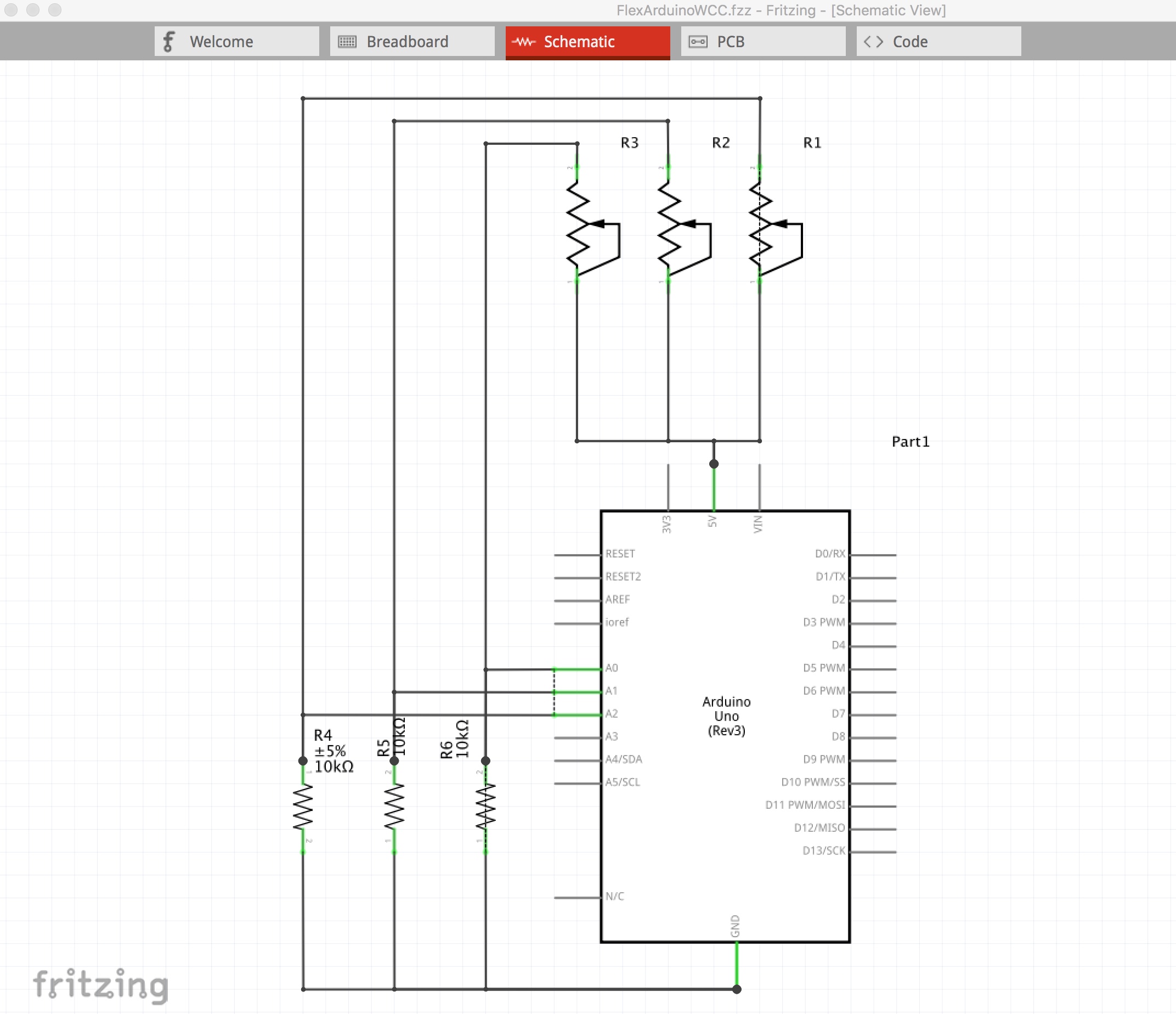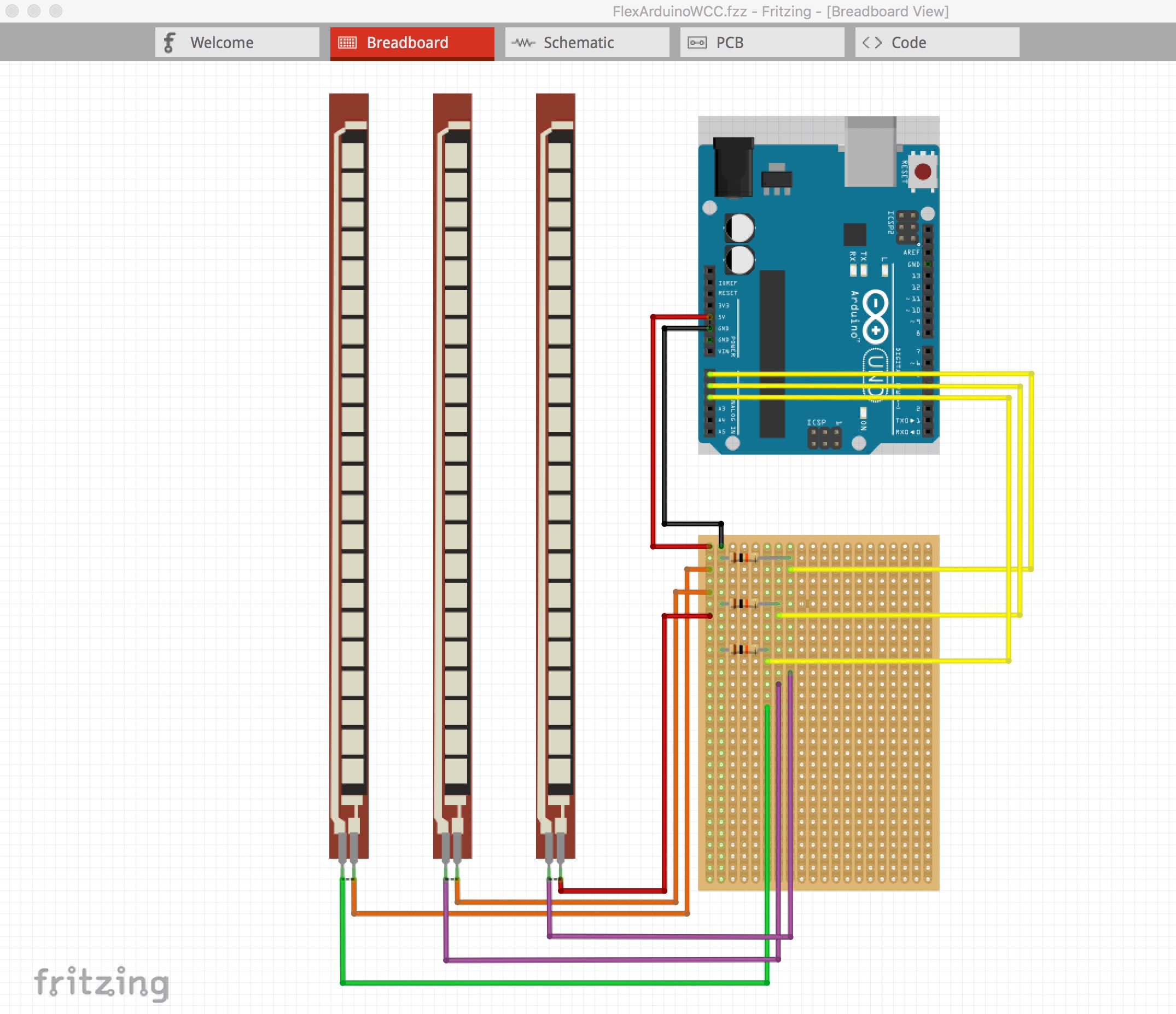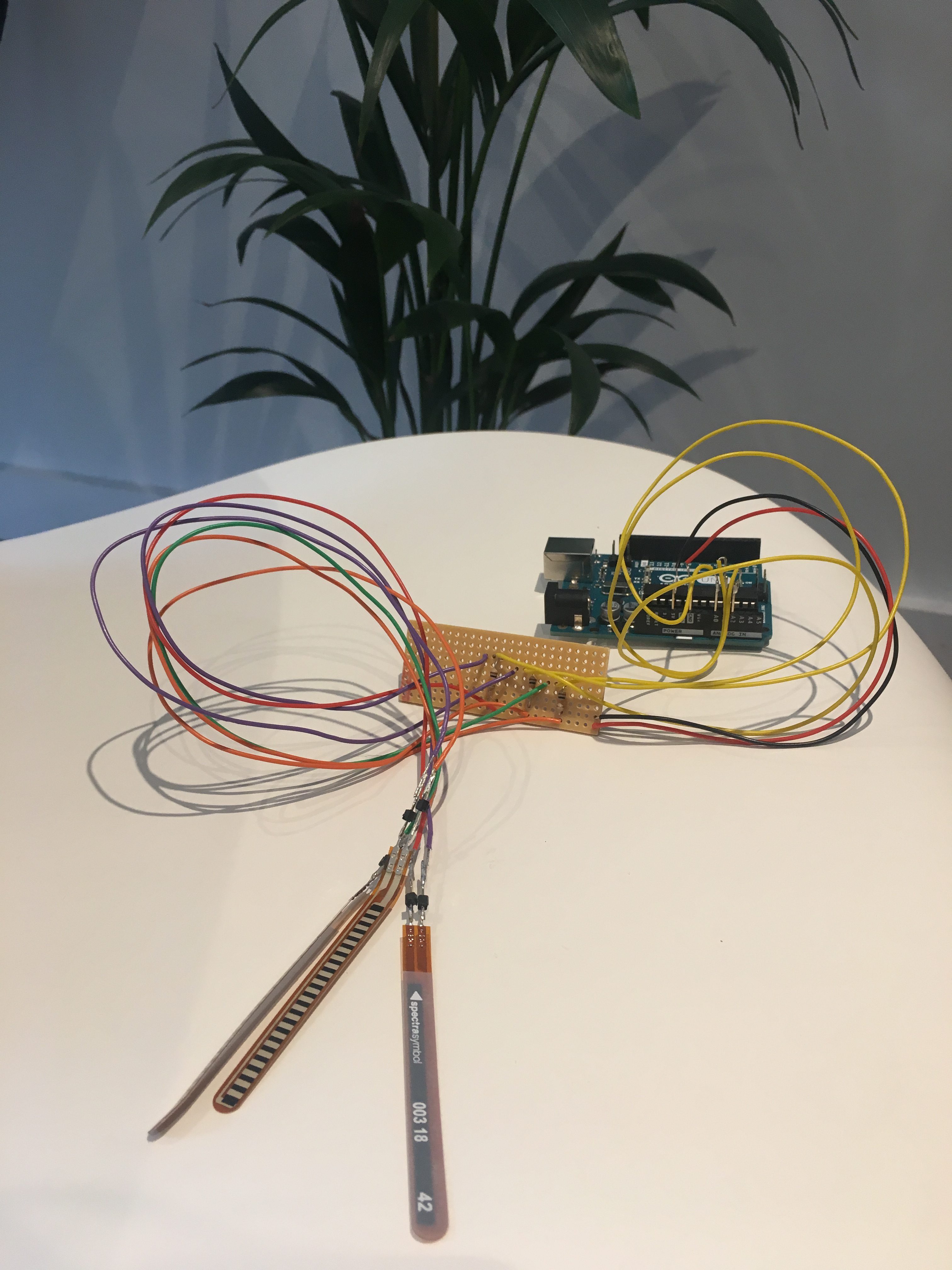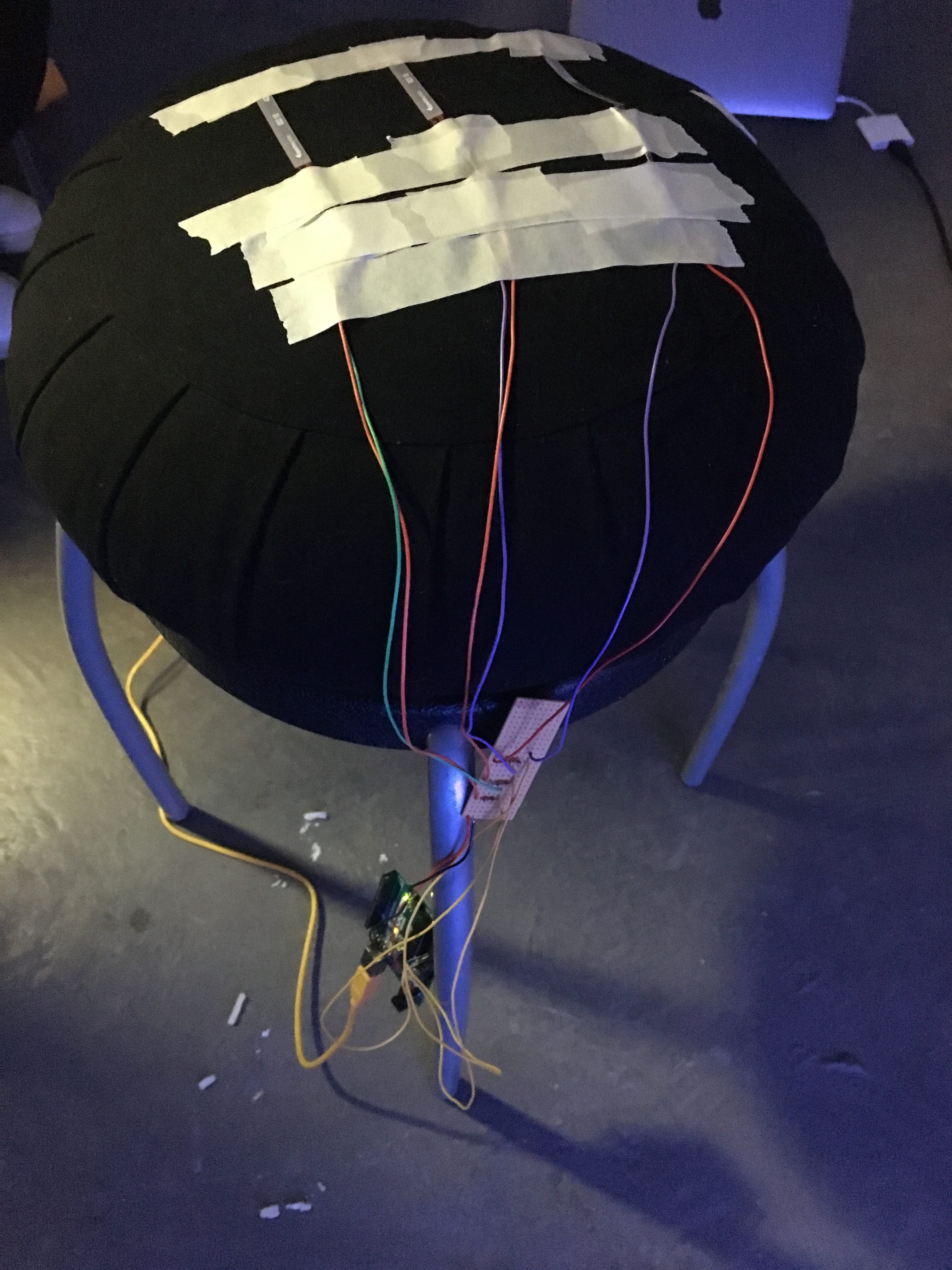Flecks
An interactive work using tactile flex sensors to manipulate a 3D spherical structure.
Produced by: Freya Berkhout
Introduction
Flecks utilises flex sensors to allow users to shape and augment a 3D sphere made up of thousands of floating triangles.
Concept and background research
I was inspired to create Flecks to explore an interest in tactile interactive art. I am particularly fascinated by ways in which technology can allow us to create spaces that mimic, expand and intensify experiences in and of the natural world. I am inspired to create works that help us interact and reconnect with nature and provide immersive and meditative experiences. I wanted Flecks to truly feel like the flex sensors were intrinsically and organically linked to the sphere of triangles. I love the work of Japanese artist Chiharu Shiota, and like her pieces, I set out to create something intricate that was made up of many tiny things.
I knew I wanted to create an input using physical computing and I had initially intended to use conductive fabric. However, after much experimenting, I decided it was too volatile to rely upon for this project. The flex sensors allowed me to create a similar experiential movement with stability and flexibility for future development. To interact with the sensors, I taped them onto a cushion that made playing with them quite fluid and relaxing.
Technical
Flecks was created using openFrameworks, the Arduino Firmata library, and flex sensors. Creating the physical computing aspect of this project meant that the piece was quite ambitious in the time frame. I spent a long time experimenting with conductive stretch and jersey fabric, how it could be used as a variable resistor and how I might utilise multiple pieces to interact with projected objects. Though I was getting quite good resistance values, attaching alligator clips meant that things were unstable and as a result, I had to pivot to using flex sensors. I had three flex sensors, and wanted each one to implement a different behaviour.
I decided early on that I would like to explore graphics in 3D, and the most important aspect of my code in openFrameworks was to get stable, continuous readings from the flex sensors and map them so that the 3D spherical structure would react as seamlessly as possible. One sensor controls the location of each triangle in the sphere, and when pressed continuously, makes the structure fade off into the distance. Another sensor moves and stretches some triangles the harder you press it, which will bounce back into place when pressure is removed. The last sensor creates a spacious, long, wormhole-like structure out of the triangles as they drift off into the ether.
Future development
I would love to expand, finesse and experiment with the behaviours of the triangles when the flex sensors are interacted with. There is room to add more sensors, which could change the sphere more radically. It would also be quite cool to add musical or sonic effects so that you get an audiovisual experience when interacting with the sensors.
Self evaluation
This project was really ambitious for me, especially considering that I decided to make my own input. I think the overall effect is quite pleasing, if not exactly what I had envisaged at the outset. It looks markedly more spacey than I had anticipated, however I like that the palette is quite autumnal and looks almost leafy. I am proud that I managed to pivot with my inputs when I needed to, I have learned a lot about exploring interactive methods but also when to shift to a more practical and reliable sensor for the time frame. I was surprised by how intuitive the piece felt when I interacted with it on the cushion, almost like a musical instrument. It was also interesting to see how the different behaviours interacted when multiple sensors were manipulated.
References
- Chiharu Shiota - http://chiharu-shiota.com/en/
- "Programming Interactivity: A Designer's Guide to Processing, Arduino, and openFrameworks” by Joshua Noble, 2012.
- “Mastering openFrameworks: Creative Coding Demystified” by Denis Perevalov, 2013.
- Arduino Firmata Library - https://www.arduino.cc/en/Reference/Firmata
- How To Work With Conductive Fabric - http://www.instructables.com/id/How-to-Work-With-Conductive-Fabric/
- Adafruit Capacitive Touch with Conductive Fabric - https://learn.adafruit.com/capacitive-touch-with-conductive-fabric-and-flora/overview






































































